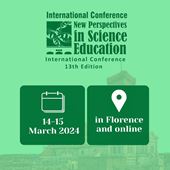Integrating AI and Experiential Learning into a Graduate Research Methods Course in Biosciences
Siobhán O Sullivan, Khalifa University, Abu Dhabi (United Arab Emirates)
David Sheehan, Khalifa University, Abu Dhabi (United Arab Emirates)
Abstract
Learning is more effective when aligned with how knowledge will be applied. In graduate life sciences programs, research methods courses aim to equip students for professional research[1]. However, traditional lecture-based approaches often emphasize theory without offering practical, adaptable learning experiences. This gap leaves students unprepared to independently design experiments, choose appropriate statistical methods, or analyse and interpret their data effectively. Incorporating Kolb’s Experiential Learning Framework transforms these courses into dynamic, student-centered experiences. Kolb’s four stages—Concrete Experience, Reflective Observation, Abstract Conceptualization, and Active Experimentation—are systematically integrated into a Postgraduate Research Methods course in Biosciences course design.
Aligning each step of the learning process with Kolb’s model, students gain practical skills, confidence, and develop a clear roadmap for their research journey. Students work with AI-generated datasets specific to their research, providing opportunities to practice biostatistical methods in a supportive, real-world context. Student presentations further enhance learning by encouraging peer collaboration and critical thinking. By sharing research questions, anticipated data types, statistical tests, and expected results with peers, students not only deepen their understanding but also develop critical communication skills. Such sessions provide a collaborative platform where students learn from each other’s insights and feedback. Through this experiential framework, the course transforms research methods education from a static overview into a dynamic, student-cantered journey. This innovative approach, which integrates AI tools and problem-based learning, prepares students for academic and professional success by bridging the gap between theory and research application in a meaningful and personalized way[2]. By embedding AI, educators can move away from traditional, one-size-fits-all approaches to research methods education and instead promote personalized and interactive learning experiences [3][4, 5].
|
Keywords |
Experiential learning, graduate education, Kolb, simulation, AI, problem based learning |
|
REFERENCES |
1. Boyle, C.R., A Problem-Based Learning Approach to Teaching Biostatistics. Journal of Statistics Education, 1999. 7(1): p. null-null. 2. Ellis, A.R. and E. Slade, A New Era of Learning: Considerations for ChatGPT as a Tool to Enhance Statistics and Data Science Education. Journal of Statistics and Data Science Education, 2023. 31(2): p. 128-133. 3. Orsini, N., R. Thiesmeier, and K. Båge, A Simulation-Based Approach to Teach Interaction Effects in Postgraduate Biostatistics Courses. Journal of Statistics and Data Science Education, 2024. 32(4): p. 395-404. 4. Pomann, G.M., et al., Experiential learning methods for biostatistics students: A model for embedding student interns in academic health centers. Stat, 2022. 11(1): p. e506. 5. Almasri, F., Exploring the impact of artificial intelligence in teaching and learning of science: A systematic review of empirical research. Research in Science Education, 202 |
 New Perspectives in Science Education
New Perspectives in Science Education





























